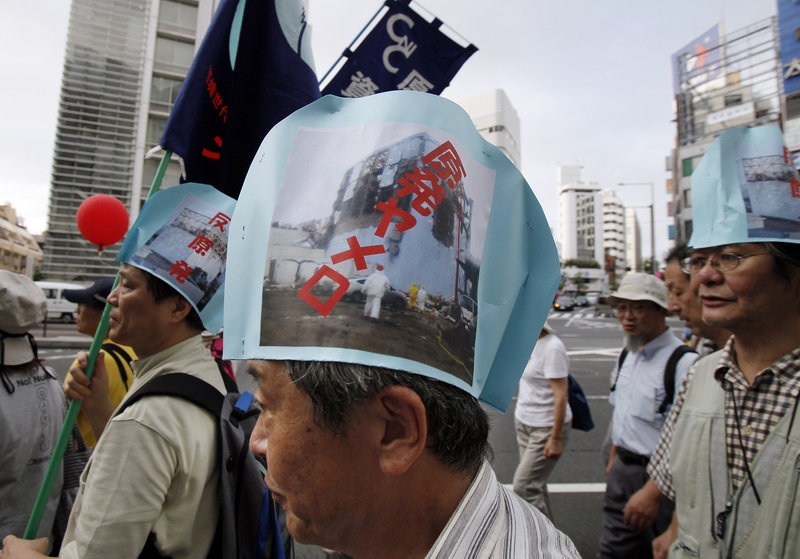PALO ALTO, Calif. — The environmental disaster at Japan’s Fukushima Dai-ichi nuclear power plant last spring is creating a new global divide over the safety of nuclear energy. Sharply differing responses to Fukushima from the world’s wealthiest and poorest nations will bring diminished safety for all.
Countries that should be best equipped to deal with nuclear mishaps are turning away from atomic energy after the meltdown of three reactors in northern Japan on March 11.
Europeans, most notably in Germany, and Americans are abandoning or delaying plans to replace or upgrade their electricity-producing nuclear plants — and extending the operational life of existing, less-safe reactors well beyond their original 40-year licensing period.
But developing countries with little nuclear experience and spotty industrial safety records are moving ahead with ambitious plans to expand generating capacity. China and India — after pausing briefly to review safety arrangements — are adding about 80 new reactors in the next two decades. (The United States has 104 of the 436 reactors worldwide.)
India’s expanding use of electricity obtained from enriched uranium — an essential ingredient in building nuclear weapons — is certain to spur Pakistan’s already well-established atomic ambitions, at a time when many see Iran’s nuclear research program as a prelude to a triangular nuclear arms race involving Israel and Arab states that covet nuclear power.
In short, the proliferation of nuclear reactors across Asia is certain to facilitate and encourage nuclear weapons proliferation as well.
“We are holding a pair of nuclear tigers by the tail,” said George Shultz, secretary of state in the Reagan administration, at a conference on nuclear risk last week at Stanford University’s Hoover Institution. The disaster at Fukushima, he said, “should prompt a deeper appreciation of … weak links in nuclear weapons … and in the humans who are charged with making decisions, not to mention those seeking to cause mass murder.”
It is progress of a kind that the nuclear disarmament movement is headed today by such establishment figures as Shultz, Henry Kissinger, William Perry and Sam Nunn. This “Gang of Four” of elder statesmen has for the past five years authored sober op-ed columns calling for the eventual abolition of nuclear weapons and given a more realistic cast to a cause once dominated by the street theater and emotionalism of pacifist movements of the Cold War era.
Shultz and his Hoover colleague Sidney Drell, a nuclear physicist, organized this gathering of physicists, nuclear engineers, academics and journalists to try to extend the rational, cost-benefit analytical approach to the less-examined area of civil nuclear power.
The calamity at Fukushima spread fears of radiation poisoning around the world — even though all but one or two of the estimated 14,000 deaths were thought to have been caused by the earthquake and tsunami that triggered the reactor meltdowns.
Germany nonetheless has ordered its 17 nuclear reactors shut down by 2022. Polls in other countries show that, there too, anti-nuclear sentiment has regained ground that it had lost in recent years, as concern mounted in developed countries about atmospheric pollution caused by carbon dioxide and the instability of petroleum prices and supplies.
This swing is notable even in countries that depend heavily on nuclear power, such as France, where Socialist Party leaders say they will raise the issue in next year’s presidential elections. In Japan, public approval of adding more nuclear plants stood at 82 percent six years ago. After Fukushima, that number has plunged to 30 percent, according to Japanese newspaper polls.
Industry representatives argued to the experts here that higher safety standards and tighter regulation protect U.S. reactors from a Fukushima-type disaster.
No consensus was reached on the reliability of those assertions. Japan made similar claims before Fukushima revealed the deadly weaknesses in its crisis-management abilities and in the International Atomic Energy Agency’s oversight capabilities.
This week marks the 25th anniversary of the Reykjavik summit, where Mikhail Gorbachev proposed that the United States and the Soviet Union abolish all their nuclear weapons — six months after he had seen the destruction and havoc wrought by a nuclear meltdown at Chernobyl.
The primary threat of irremediable damage to the planet no longer comes from rocket forces commanded by the Kremlin and the Pentagon but from nuclear bureaucracies in Tehran, Jerusalem, New Delhi, Islamabad and other capitals in the developing world, as well as from terror networks intent on acquiring fissionable material.
The Obama administration has supported the creative proposals put forward by the Gang of Four and the Global Zero movement, and promised disarmament initiatives of its own in a comprehensive Nuclear Posture Review and a Washington summit on proliferation.
But the nuclear world has changed dramatically in the past six months. The administration needs to recognize and act on the reality that Fukushima — like Chernobyl in its day — issued a summons to new thinking.
Jim Hoagland, a contributing editor to The Washington Post, is currently an Annenberg visiting fellow at the Hoover Institution.
Send questions/comments to the editors.



Success. Please wait for the page to reload. If the page does not reload within 5 seconds, please refresh the page.
Enter your email and password to access comments.
Hi, to comment on stories you must . This profile is in addition to your subscription and website login.
Already have a commenting profile? .
Invalid username/password.
Please check your email to confirm and complete your registration.
Only subscribers are eligible to post comments. Please subscribe or login first for digital access. Here’s why.
Use the form below to reset your password. When you've submitted your account email, we will send an email with a reset code.